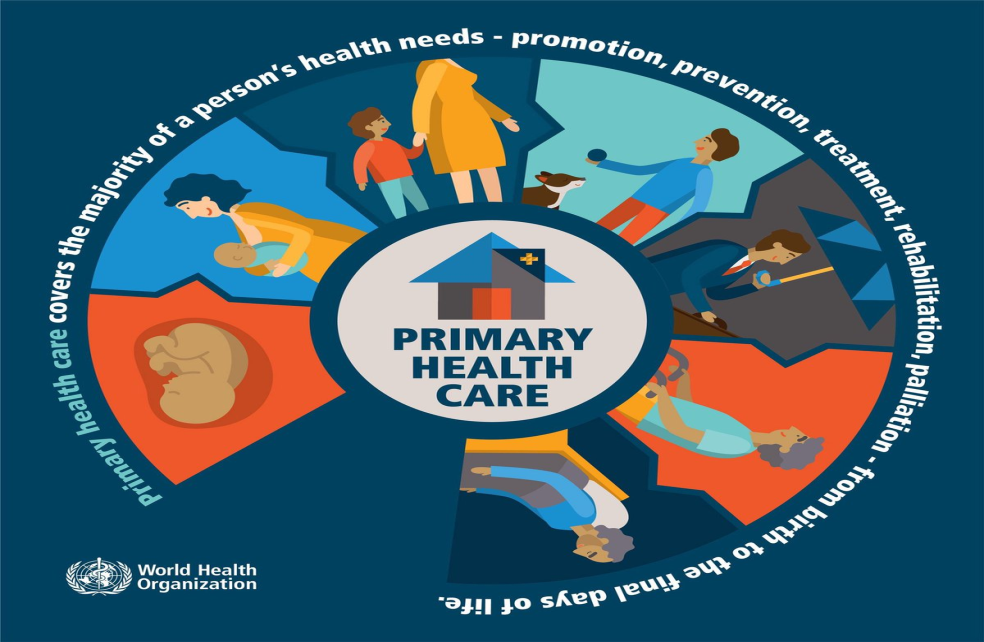Description

Copyright infringement is not intended
Context - Recently Published ‘Global Health Report’ indicated that “Insufficient funding of Primary Healthcare Systems hurting ground level Healthcare services”.
Details
- According to the published report “Funding in primary healthcare systems in low- and middle-income countries is insufficient”.
- Primary healthcare is the backbone of health systems in India. The Primary Healthcare system is strengthened by the National Health Mission and receives funding from state governments.
- The 1978 Alma-Ata declaration was the first to document the principles of primary healthcare.
- The report recommended that “Investing more and investing better is the key solution to provide equitable, comprehensive, integrated and high-quality” Healthcare.
Alma-Ata Declaration
- Alma-Ata Declaration was adopted at the International Conference on Primary Health Care (PHC) in 1978.
- The Conference highlighted the inequality of health status between the developed and the developing countries and termed it politically, socially and economically unacceptable.
- The Declaration clearly expressed the need for urgent action to protect and promote the health of all people.
- It was the first international declaration highlighting the importance of primary health care.
- The Primary Healthcare approach was promoted as the key to achieving the goal of "Health For All".
Healthcare Status in India
- India has the dual burden of both communicable and non-communicable diseases and many of these diseases can be prevented by early diagnosis, providing health education, timely referral and management.
- Nearly 8 lakh cases of cancer are detected each year and around 60-80% of the cases are diagnosed late.
- Lack of awareness and poor health-seeking behaviour has been found to be the major underlying causes of many diseases.
- Inadequate Quality, Accessibility and Affordability of Health Services.
- High out of pocket expenses.
- Shortage of Infrastructure, Equipment and Skilled Manpower.
- Rigid regulatory Framework Combined with Corrupt enforcement.
- Primary Health Care Centres are not Present in many villages and wherever Present they lack basic facilities.
- Inefficiencies in Procurement Process result in both Shortages and Wastage.
- Nearly 70% of Healthcare delivery is through Private Players which are largely regulated.
- Lack of Sanitation, disease Surveillance, Political will and Public Health response.
- Government spend only 1.5% of GDP on Public Health Care.
- Rising incidence of non-Communicable diseases with income growth, lifestyle Changes and environmental degradation, resulting in a rising total burden of disease.
Steps were taken by the Government
- Promotion of Institutional deliveries through Cash incentive under Janani Suraksha Yojana.
- Janani Shishu Suraksha Karyakram: Free ante-natal Check-ups, Post-natal Care and treatment of Sick infants till one year of age.
- Providing Reproductive, Maternal, Newborn, Child and Adolescent Health Services, the establishment of Special Newborn Care Units.
- Mission Indradhnaush: Expanding full immunisation Coverage, the introduction of new vaccines.
- PM Swasthya Suraksha Yojana for strengthening the tertiary health Sector.
- POSHAN Abhiyaan to address Malnutrition.
- Iron and folic acid Supplementation for the Prevention of Anaemia, home visits by ASHAs to promote breastfeeding and promote the use of ORS and Zinc for the management of diarrhoea in children.
- Capacity building of Health Care Providers: Training is being conducted under the National Health Mission to build and upgrade the Skills of Health Care Providers.
- National Health Resource Repository: Create a reliable, unified registry of the Country’s healthcare resources showing the distribution pattern of health facilities and Services between Cities and rural areas. ISRO is a technology Partner for providing data Security.
- Allowed 100% FDI in the Medical devices Sector to promote Make in India.
- Kayakalp initiative to Promote Cleanliness, hygiene and infection control practices in public health facilities.
National Health Policy 2017 targets
- Shifts From communicable to non-communicable diseases.
- Collaborating and regulating the private sector.
- A shift from Sick-care to wellness.
- Increase Life Expectancy at birth from 67.5 to 70 by 2025.
- Reduction of TFR to 2.1 at national and Sub-national levels by 2025.
- Reduce Under Five Mortality to 23 by 2025 and MMR from current levels to 100 by 2020.
- Reduce infant mortality rate to 28 by 2019.
- Reduce neonatal mortality to 16 and the stillbirth rate to “single-digit” by 2025.
- Reduce premature mortality from cardiovascular diseases, cancer, diabetes or chronic respiratory diseases by 25% by 2025.
Way Forward
- Reduce the Pressure on Secondary and tertiary hospitals by investing in Preventive and Primary Health Care facilities.
- Focus on Early detection and Prevention.
- Provide adequate protection to doctors.
- Increasing the Doctor-Patient ratio.
- Reduce Out of Pocket Expenditure.
- Increase the number of vaccines under Mission Indradhanush.
- Increasing the number of drugs and medical devices under price control.
- The Ministry Should Standardize the Cost of Certain treatments.
- Raising Public Health expenditure to 2.5% of GDP.
- Provide accessible, affordable and quality health care.
- Inform and educate people about the traditional Systems of medicine.
- Ayurveda Doctors and Yoga Teachers for Rural Areas.
- Improve Hospital access, Health worker density, and Access to essential medicine.
- Mobile Medical Units to Provide outreach Services in rural and remote areas.
https://www.downtoearth.org.in/news/governance/primary-healthcare-fails-to-meet-needs-of-people-it-was-built-for-lancet-study-82272













